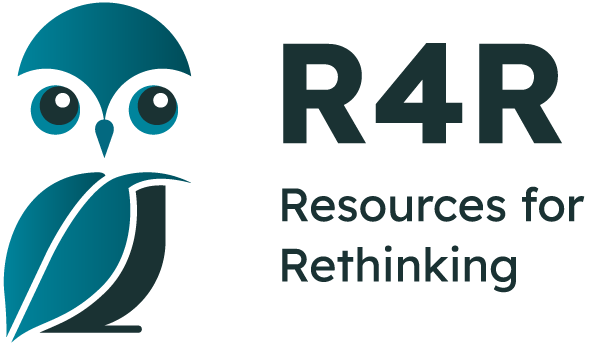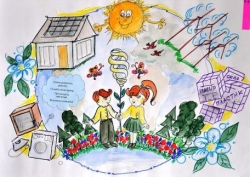- Home
- Tutorial
- Resource Guides
- Focus Areas
- LSF Programs
-
Professional
Development - Review Process
-
A project of LSF

Search for Resources
Description
Through a variety of activities, students learn about different sources of energy and the amount of energy that they consume every day. This lesson plan contains six short activities:
- What is Energy? Students learn where electricity comes from and the difference between renewable and non-renewable energy via a discussion of photos.
- Ranking Appliances - students brainstorm a list of appliances that are common in most homes. They then focus on a list of 5 and estimate which consumes the most to least energy. Afterwards, the energy consumption of each appliance is shared.
- Wasting Without Knowing - Students will compare two types of light bulbs: incandescent and CFL .
- In Limbo - Students will line up for a limbo contest and choose an energy use card. If the card is an inefficient use of energy, the limbo stick goes down, and if it is an efficient use the stick goes up.
- Count Yourself In! Students will choose five goals to lower their energy consumption.
- Walk About - Students take part in a “green energy hunt” to find how much renewable energy is being used in the community.
General Assessment
What skills does this resource explicitly teach?
The focus of this lesson plan is to build awareness and knowledge rather than skills.
Strengths
This lesson plan is easy to use and also gives the teacher a fair amount of background information. In addition, all of the required materials are provided to facilitate planning.
Weaknesses
There is a lack of assessment tools and suggestions for learners experiencing difficulties.
Recommendation of how and where to use it
As this is one lesson in an eight part series, it could stand alone as an introduction to energy for the teacher. The entire series of lessons could be a focus during a unit around Earth Day and Earth Hour.
Relevant Curriculum Units
The following tool will allow you to explore the relevant curriculum matches for this resource. To start, select a province listed below.
- Step 1Select a province
- Alberta
- British Columbia
- Step 2Select a grade level
- Grade 1
- Step 3Select a subject
- Science
- Step 4Relevant matches
- Science 1: Matter is useful because of its properties.
- Grade 2
- Step 3Select a subject
- Science
- Step 4Relevant matches
- Science 2: Materials can be changed through physical and chemical processes
- Grade 3
- Step 3Select a subject
- Science
- Step 4Relevant matches
- Science 3: Thermal energy can be produced and transferred.
- Manitoba
- New Brunswick
- Step 2Select a grade level
- Grade 1
- Step 3Select a subject
- Health Education
- Step 4Relevant matches
- Explore Your World: Diversity and Social Responsibility
- Science
- Step 4Relevant matches
- Explore Your World: Diversity and Social Responsibility
- Social Studies
- Step 4Relevant matches
- Explore Your World: Diversity and Social Responsibility
- Northwest Territories
- Step 2Select a grade level
- Kindergarten
- Step 3Select a subject
- Science
- Step 4Relevant matches
- Structure & Mechanism: Machines Around Us
- Grade 1
- Step 3Select a subject
- Science
- Step 4Relevant matches
- Energy and Control: Energy in our Lives
- Science 1: Matter is useful because of its properties.
- Grade 2
- Step 3Select a subject
- Science
- Step 4Relevant matches
- Energy and Control: Energy from Wind and Moving Water
- Science 2: Materials can be changed through physical and chemical processes
- Grade 3
- Step 3Select a subject
- Science
- Step 4Relevant matches
- Science 3: Thermal energy can be produced and transferred.
- Grade 4
- Step 3Select a subject
- Science
- Step 4Relevant matches
- Science 4:Energy can be transformed
- Nunavut
- Step 2Select a grade level
- Kindergarten
- Step 3Select a subject
- Science
- Step 4Relevant matches
- Structure & Mechanism: Machines Around Us
- Grade 1
- Step 3Select a subject
- Science
- Step 4Relevant matches
- Energy and Control: Energy in our Lives
- Ontario
- Step 2Select a grade level
- Grade 1
- Step 3Select a subject
- Science & Technology
- Step 4Relevant matches
- Matter and Energy: Energy in Our Lives
- Quebec
- Step 2Select a grade level
- Grade 3
- Step 3Select a subject
- Science & Technology
- Step 4Relevant matches
- Material World
- Yukon Territory
Themes Addressed
Energy (2)
- Energy Generation
- Energy Use
Sustainability Education Principles
| Principle | Rating | Explanation |
|---|---|---|
| Consideration of Alternative Perspectives | Good | While the students are learning about the different types of energy, they are presented with all of the information regarding the pros and cons of each type. |
Consideration of Alternative Perspectives:
| ||
| Multiple Dimensions of Problems & Solutions | Good | |
| Multiple Dimensions of Problems & Solutions: Effectively addresses the environmental, economic and social dimensions of the issue(s) being explored.
| ||
| Respects Complexity | Good | Considering the focus age group of the lesson, this component is respected. |
| Respects Complexity: The complexity of the problems/issues being discussed is respected. | ||
| Acting on Learning | Good | As part of the activity The Environmental Footprint Tree, the students choose ways to reduce their energy consumption. |
| Acting on Learning: Learning moves from understanding issues to working towards positive change — in personal lifestyle, in school, in the community, or for the planet
| ||
| Values Education | Good | There are points in the lesson plan for the students to self-reflect and evaluate their own energy use. This allows them to clarify their own values on the topic. |
| Values Education: Students are explicitly provided with opportunities to identify, clarify and express their own beliefs/values. | ||
| Empathy & Respect for Humans | Poor/Not considered | This is not a focus of this resource. |
| Empathy & Respect for Humans: Empathy and respect are fostered for diverse groups of humans (including different genders, ethnic groups, sexual preferences, etc.). | ||
| Personal Affinity with Earth | Good | |
| Personal Affinity with Earth: Encourages a personal affinity with -the natural world.
| ||
| Locally-Focused Learning | Very Good | This resource allows the students to evaluate their habits at home as well as discover renewable energy resources in their community. |
| Locally-Focused Learning: Includes learning experiences that take advantage of issues/elements within the local community.
| ||
| Past, Present & Future | Good | |
| Past, Present & Future: Promotes an understanding of the past, a sense of the present, and a positive vision for the future. | ||
Pedagogical Approaches
| Principle | Rating | Explanation |
|---|---|---|
| Open-Ended Instruction | Very Good | The nature of the discussion questions allows the students to explore their thoughts and ideas on the topic. |
| Open-Ended Instruction
: Lessons are structured so that multiple/complex answers are possible; students are not steered toward one 'right' answer. | ||
| Integrated Learning | Satisfactory | This resource is identifiable primarily as a Science resource. |
| Integrated Learning: Learning brings together content and skills from more than one subject area
| ||
| Inquiry Learning | Satisfactory | |
| Inquiry Learning: Learning is directed by questions, problems, or challenges that students work to address.
| ||
| Differentiated Instruction | Good | The variety of activities allows for all students to participate; however, there are no strategies included for learners with difficulties. |
| Differentiated Instruction: Activities address a range of student learning styles, abilities and readiness.
| ||
| Experiential Learning | Satisfactory | |
| Experiential Learning: Authentic learning experiences are provided
| ||
| Cooperative Learning | Satisfactory | |
| Cooperative Learning: Group and cooperative learning strategies are a priority.
| ||
| Assessment & Evaluation | Poor/Not considered | Unfortunately, there are no suggestions or tools for assessment included in this resource. |
| Assessment & Evaluation: Tools are provided that help students and teachers to capture formative and summative information about students' learning and performance. These tools may include reflection questions, checklists, rubrics, etc. | ||
| Peer Teaching | Satisfactory | |
| Peer Teaching: Provides opportunities for students to actively present their knowledge and skills to peers and/or act as teachers and mentors.
| ||
| Case Studies | Poor/Not considered | This is not a focus of this resource. |
| Case Studies: Relevant case studies are included. Case studies are thorough descriptions of real events from real situations that students use to explore concepts in an authentic context. | ||
| Locus of Control | Poor/Not considered | This is not considered in this resource due to the nature of the target audience. |
| Locus of Control: Meaningful opportunities are provided for students to choose elements of program content, the medium in which they wish to work, and/or to go deeper into a chosen issue. | ||

